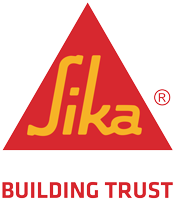Cold Weather Concreting: What you need to know
Colder weather is upon us but that doesn’t mean construction stops. When it comes to working with concrete in colder temperatures, good planning and preparation can mean the difference between success and failure on your next cold weather concreting project. Cold weather concreting is the process of placement, finishing, curing, and protection of concrete during cold weather, which is defined as a period where for more than three successive days the average daily air temperature drops below 40°F and stays below 50°F for more than one-half of any 24-hour period, according the American Concreting Institute (ACI).
Preparation is the key to working with concrete during colder weather conditions. If you know that you will have a concreting project coming up during the colder months, be sure to plan before the cold weather hits. Your can start by preparing the required equipment and materials, such as heaters, insulating materials and enclosures on the construction site before the concreting process. You may want to consider air-entraining of concrete for members exposed to a series of freeze and thaw cycles such as the slab and other flatworks. Be sure to clean surfaces and reinforcements from snow, ice and frost. Keep good jobsite records including the weather conditions, record, at least twice daily the observed weather conditions air and the concrete surface temps.
The National Ready Mix Concrete Association (NRMCA) has outlined the following guidelines for cold weather concreting.
- Use air-entrained concrete when exposure to moisture and freezing and thawing conditions are expected.
- Keep surfaces in contact with concrete free of ice and snow and at a temperature above freezing prior to placement.
- Place and maintain concrete at the recommended temperature.
- Place concrete at the lowest practical slump.
- Protect plastic concrete from freezing and drying.
- Protect concrete from early age freezing and thawing cycles until it has attained adequate strength.
- Limit rapid temperature changes when protective measures are removed.
What are some Cold Weather Concreting Tips?
These cold weather concreting tips can also apply when working with Master Builders Solutions cementitious bagged products found in our Flooring, Grouts and Repair Mortar product lines. Master Builders Solutions offers a wide range of solutions that can help make your cold weather concreting project a success. A few products you may want to consider for your next cold weather installation, include:
- MasterEmaco T 430 - a one-component high-performance cementitious repair mortar, especially suited for cold weather installations and the repair of freezer floors.
- MasterEmaco S 6000 - a solvent free, 100% reactive methacrylate liquid component and a specially blended filler component, which includes MasterTop A 100 BPO. Typical cure time is one hour at temperatures ranging from 14 to 104° F (−10 to 40° C).
- MasterEmaco T 545 - a one-component magnesium phosphate-based mortar, offered in two formulations: T 545 for ambient and substrate temperatures below 85° F (29° C) and T 545HT for ambient and substrate temperatures ranging from 85 to 100° F (29 to 38° C).
- MasterProtect HB 300 SB - a waterborne, high-build, modified acrylic waterproof coating for above-grade concrete, stucco, block and brick surfaces, suitable for cool weather applications.
- MasterFlow 4316 - provides high early and ultimate compressive strengths over a wide variety of application and service temperatures. The superior performance of MasterFlow 4316 lies in its novel hydraulic binder with applied nanotechnology and premium material aggregates which, when mixed with water, produces a flowable and pumpable grout that can be installed in temperatures ranging from 35 to 100° F (2 to 38° C).
To consult with one of our concreting specialists or to learn more about cold weather concreting solutions, contact us to discuss your project.


